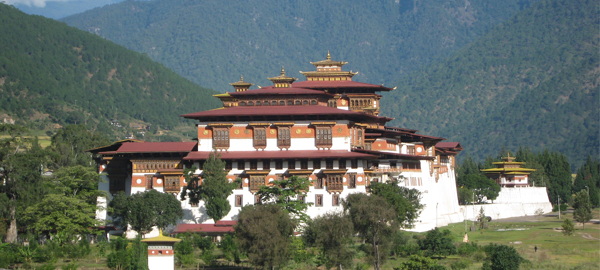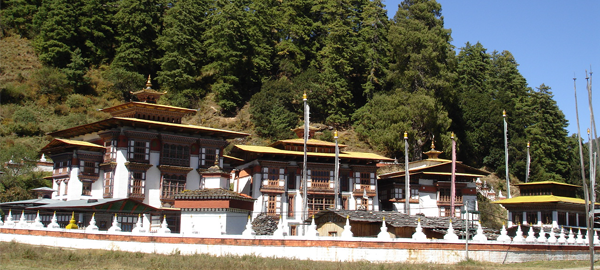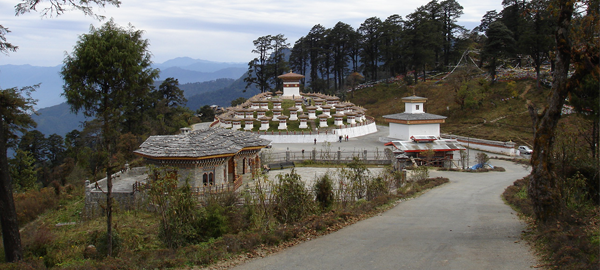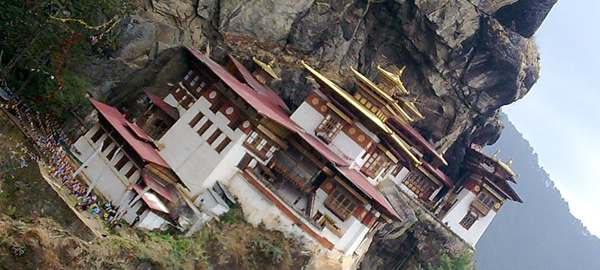
CULTURE

Architecture

The Driglam Namzha codifies the traditional rules for the construction of the dzongs as well as ordinary buildings. Under the direction of an inspired lama the fortress is constructed by citizens who historically participated as part of their tax obligation to the state. Modernly, however, traditional structures are built by wage laborers, straining the government's ability to repair and preserve dzongs in particular.
Traditional Dress

The national dress of Bhutan is called the gho and Kiro for men and women respectively. It was introduced by Zhabdrung Ngawang Namgyel during the 17th century to give the Bhutanese a unique identity.
In an effort to preserve and promote its cultural heritage, all Bhutanese are required to wear the national dress in government offices, schools and on formal occasions.
The men wear a gho, tied in place at the waist with a small hand-woven kera (belt).The women wear kira, wrapped around the body over a blouse called wonju.
Bhutanese Arts & Crafts

An essential part of Bhutan's cultural heritage is the traditional arts and crafts that have been practiced from time immemorial. Most of Bhutanese spiritual and intellectual life is manifested through its arts. Bhutanese arts are not only concerned with abstracts of beauty, but with interpretation of values and beliefs that are held by majority. These arts were formally categorized during the reign of Gyalse Tenzin Rabgay, the fourth temporal ruler of Bhutan.
National Sports
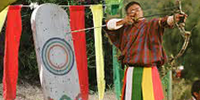
Archery in Bhutan is the national sport of the Kingdom. Archery was declared the national sport in 1971, when Bhutan became a member of theUnited Nations. Previously, competitions were held only at dzongkhag and gewog levels, however modernly, archery tournaments and competitions are held throughout the country. Archery is played during religious and secular public holidays in Bhutan, local festivals (tsechu), between public ministries and departments, and between the dzongkhag and the regional teams.
Festival

Festivals have a special place in the hearts of Bhutanese people. Most of the Bhutanese festivals commemorate the deeds of the Buddha, or those of the great masters of the past associated with one Buddhist tradition or another.
It is believed that everyone must attend a Festival at least once in order to receive blessings and wash away our sins. Every mask dance performed during a Tshechu has a special meaning or a story behind it and many are based on stories and incidents from as long ago as the 8th century, during the life of Guru Padmasambhava.
 The Driglam Namzha codifies the traditional rules for the construction of the dzongs as well as ordinary buildings. Under the direction of an inspired lama the fortress is constructed by citizens who historically participated as part of their tax obligation to the state. Modernly, however, traditional structures are built by wage laborers, straining the government's ability to repair and preserve dzongs in particular.
The Driglam Namzha codifies the traditional rules for the construction of the dzongs as well as ordinary buildings. Under the direction of an inspired lama the fortress is constructed by citizens who historically participated as part of their tax obligation to the state. Modernly, however, traditional structures are built by wage laborers, straining the government's ability to repair and preserve dzongs in particular. 





